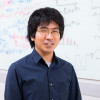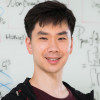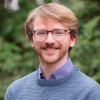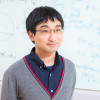iTHEMS Biology Seminar
198 events
We are holding regular seminars and other activities on topics related to biology. Our aim is to lower the boundaries between biology and mathematics/physics, to identify common grounds between biology and mathematics/physics, and to develop ideas for new research topics at the intersection of biology and mathematics or physics.
For further details see iTHEMS Biology Seminar Study Group page.
-
Seminar

RNA-Puzzles - the evaluation and automation of RNA 3D structure
November 24 (Thu) at 16:00 - 17:00, 2022
Zhichao (Chichau) Miao (Principal Investigator, Guangzhou Laboratory, China / Guangzhou Medical University, China)
RNA-Puzzles is a collective endeavour dedicated to the advancement and improvement of RNA 3D structure prediction. With agreement from crystallographers, the RNA structures are predicted by various groups before the publication of the crystal structures. Systematic protocols for comparing models and crystal structures are described and analyzed. In RNA-Puzzles, we discuss a) the capabilities and limitations of current methods of 3D RNA structure based on sequences; b) the progress in RNA structure prediction; c) the possible bottlenecks that hold back the field; d) the comparison between the automated web server and human experts; e) the prediction rules, such as coaxial stacking; f) the prediction of structural details and ligand binding; g) the development of novel prediction methods; and h) the potential improvements to be made. Till now, 37 RNAs with crystal structures have been predicted, while many of them have achieved high accuracy in comparison with the crystal structures. We have summarized part of our results in three papers and two community-wide meetings. With the results in RNA-Puzzles, we illustrate that the current bottlenecks in the field may lie in the prediction of non-Watson-Crick interactions and the reconstruction of the global topology. Correct coaxial stacking and tertiary contacts are key for the prediction of RNA architecture, while ligand binding modes can only be predicted with low resolution. For the model evaluation, we present RNA-Puzzles toolkit, a computational resource including (i) decoy sets generated by different RNA 3D structure prediction methods, (ii) 3D structure normalization, analysis, manipulation, visualization tools and (iii) 3D structure comparison metric tools. With the increasing number of RNA structures being solved as well as the high-throughput biochemical experiments, RNA 3D structure prediction is becoming routine and accurate. Structure modelling may effectively help in understanding the viral RNA structures, including the SARS-CoV-2.
Venue: via Zoom
Event Official Language: English
-
Seminar
Emergence of growth and dormancy from a kinetic model of the Escherichia coli central carbon metabolism
November 17 (Thu) at 18:00 - 19:00, 2022
Yusuke Himeoka (Assistant Professor, Universal Biology Institute, The University of Tokyo)
Physiological states of bacterial cells exhibit a wide spectrum of timescale. Under nutrient-rich conditions, most of the cells in an isogenic bacterial population grow at certain rates, while a small subpopulation sometimes stays in a dormant state where the growth rates slow down by orders of magnitude. For revealing the origins of such heterogeneity of timescales, we studied the kinetic model of Escherichia coli central carbon metabolism. We found that the model robustly exhibits both the growing- and the dormant state. Performing the model reduction, we have revealed the necessary conditions for the distinct behaviour, namely, the depletion of energy due to the futile cycle and its non-uniform impact on the kinetics because of the coexistence of the energy currency-coupled and uncoupled reactions as well as branching of the network.
Venue: via Zoom
Event Official Language: English
-
Seminar
Sociogenesis: motivations and first steps
November 10 (Thu) at 16:00 - 17:00, 2022
Cédric Ho Thanh (Postdoctoral Researcher, Prediction Science Laboratory, RIKEN Cluster for Pioneering Research (CPR))
Sociogenesis is a project that aims to study emergent social behaviors of multi-agent systems. In its simplest form, and agent simply seeks to survive by consuming food and maximizing some happiness score. In this presentation, I will discuss some motivations and inspirations of this project, as well as the challenges to get an agent to survive on its own. I will then showcase some methods to evaluate the quality of agents and their underlying architecture beyond simply looking at their lifespan. I will then conclude with some potential applications. No prior knowledge in reinforcement/deep learning is required to attend this presentation. This work is still mostly at an exploratory stage, so discussions and inputs from the audience are more than welcome!
Venue: via Zoom
Event Official Language: English
-
Seminar
Migration dynamics and model of cells crawling on a matrix with cell-scale stiffness heterogeneity
October 27 (Thu) at 16:00 - 17:00, 2022
Hiroyuki Ebata (Assistant Professor, Graduate School of Science, Kyushu University)
In living tissues where cells migrate, spatial distribution of mechanical properties, especially matrix stiffness, are generally heterogenous with cell-scales ranging from 10 to 1000 μm. Since the cell migration in our body plays critical role in morphogenesis, wound healing, and cancer metastasis, it is essential to understand the migratory dynamics on the matrix with cell-scale stiffness heterogeneity. However, while cellular responses to homogeneous matrix have been extensively explored, studies of the cell motility with stiffness heterogeneity have been limited to the directional movement (durotaxis) driven by a simple stiffness gradient. Thus, we need to elucidate how cell migration is determined through the interaction among cell-scale stiffness heterogeneity and cellular responses such as dynamics of the cell-matrix adhesion site, the intracellular prestress, and cell shape. In this talk, we introduce our experiments on cell motility, shaping, adhesion, and traction forces at long time scales using microelastically patterned hydrogels that enable us to systematically control the cell-scale heterogeneity of the matrix-stiffness. Using microelastically patterned hydrogels, we showed that the cell exhibited a general mode of durotaxis depending on the shape and size of the stiff domains, which was coincided with the extraordinarily large fluctuation of the traction force. We proposed a cell migration model based on equations of a deformable self-propelled particle adopting an amoeboid swimmer-like velocity-shape relationship. By considering the cellular response to stiffness gradients, the model can reproduce general durotaxis driven by cell-scale heterogeneity of the matrix-stiffness.
Venue: via Zoom
Event Official Language: English
-
Seminar

How can interspecific pollen transfer affect coexistence and evolution of sex ratio of two closely related plant species?
October 20 (Thu) at 16:00 - 17:00, 2022
Keiichi Morita (Ph.D. Student, School of Advanced Sciences Department of Evolutionary Studies of Biosystems, The Graduate University for Advanced Studies (SOKENDAI))
In co-flowering species with shared pollinators, interspecific pollen transfer (IPT) may occur, in which pollen grains are transferred between different species. Yet, it is unclear how the costs of IPT in reduced pollen grains (i.e., costs for males) and seed set (i.e., costs for females) can affect coexistence and evolution of sex ratio. We investigated the conditions for which two closely related plants can coexist and of evolution in sex ratio, by constructing a theoretical model that incorporates the dynamics of population, pollen export, pollen reception on an ovule, and seed production in two closely related plants with resource competition and IPT. The model analysis revealed that coexistence is likely with infrequent IPT, α, and weak interspecific resource competition, β, and high production rates of pollen, Am, and ovules, Af. Also, we found a trade-off where too low value of either Am or Af makes both species go extinct. Furthermore, even when α and β were small enough, too low Am and Af made extinction of both species likely, because of the Allee effect due to resource competition and interspecific pollen competition for a small number of ovules. Adaptive dynamics, analysis of evolutionary dynamics showed that sex ratio evolve to 1:1 as the optimum allocation of resource to produce pollen grains and ovules.
Venue: via Zoom
Event Official Language: English
-
Seminar

Introduction to cepstrum analysis and its applications
October 13 (Thu) at 16:00 - 17:00, 2022
Shingo Gibo (Postdoctoral Researcher, RIKEN Interdisciplinary Theoretical and Mathematical Sciences Program (iTHEMS))
Recent advances in experimental technique enable us to obtain many time-series data of biological oscillatory systems. These time-series are of various shapes, which means that the envelop of spectrum are also various. Cepstrum analysis is well-known method for evaluating the spectrum shapes in acoustic engineering. In this talk, I will introduce cepstrum analysis and its applications for analyzing biological oscillations.
Venue: via Zoom
Event Official Language: English
-
Seminar
Extremely low-coverage whole genome sequencing (XLC-WGS) as a cost-effective tool for pharmacogenomic profiling: Advantages and Challenges
October 6 (Thu) at 10:00 - 11:00, 2022
Lazaro-Guevara Jose Miguel (Postdoctoral Researcher, Department of Botany, The University of British Columbia, Canada)
Despite more than 10 years have passed since the first FDA labeling for pharmacogenomics (PGx), factors like the continuous updates on PGx related SNVs and the high cost for PGx testing have challenged its clinical implementation. However, next generation sequencing technologies like extremely low coverage whole genome sequencing (XLC-WGS) could overcome these difficulties. Our purpose is to explore the potential use of XLC-WGS as a cost-effective way for generate reliable PGx profiles that can be applied in preemptive and clinical scenarios. We sequenced 195 patients enrolled to the Utah Diabetes and Diabetic Complications Study using XLC-WGS, for further PGx Profiles generation. Additionally, we sequenced a subset of 190 individuals using Illumina CoreExome-24 v1.3 microarray and 50 individuals using Deep Coverage Whole Genome Sequencing (DC-WGS) for cross-platform comparisons. We built the Pharmacogenomic profiles extracting the genetic information from XLC-WGS in accordance to the extended manifest of the commercially available PGx microarray PharmacoScan. Once the PGx profiles were generated we perform a preemptive analysis using the Clinical Pharmacogenetics Implementation Consortium (CPIC®) Gene-Drugs interaction with “A” level. The cross-platform comparison revealed that genetic concordance between XLC-WGS, DC-WGS and Microarray platforms ranged from 98.25% to 99.7%. The preemptive PGx profiles identified patients at risk of potential adverse effects for intake of commonly prescribed medications, including 4 homozygote carriers of rs4149056 (in SLCO1B1) which has previously been associated with statin-related myopathy. As well as 25 homozygote carriers of rs9923231 (in VKORC1) that increased risk of Hemorrhage when starting Warfarin intake without dose adjustment/reduction.
Venue: via Zoom
Event Official Language: English
-
Seminar

Discrete Stochastic Model for the Co-infection Dynamics with Defective Interfering Particles
September 26 (Mon) at 16:00 - 17:00, 2022
Jizhou Li (Postdoctoral Researcher, RIKEN Interdisciplinary Theoretical and Mathematical Sciences Program (iTHEMS))
Defective interfering particle (DIP) in the context of influenza A virus is a virion with a significantly shortened RNA segment substituting one of its eight full-length parent RNA segments, such that it is preferentially amplified during replications. Therefore, a cell co-infected by standard viruses (STVs) and DIPs will produce mainly DIPs, suppressing the STV yield and displaying nontrivial co-infection dynamics. An important approach to quantifying the co-infection dynamics is mathematical modeling with ordinary differential equations (ODEs), which treat relevant quantities (such as numbers of target cells, STVs, and DIPs) as continuous numbers evolving with prescribed physical laws. However, the ODE models are mean-field in nature that is only valid for scenarios with large numbers of STVs and DIPs. For small-number scenarios, the infection outcomes can be dominated by random fluctuations and stochasticity, which cannot be captured by ODE models. In this week’s biology seminar, we introduce a new Discrete Stochastic Model (DSM) aimed to rectify the shortcomings of the ODEs by treating the co-infection dynamics as stochastic processes. As we will show, the new DSM is consistent with the ODE model in the large number regime. In the low number regime, the DSM yields bi-modal distributions for the infection outcomes (extinct vs established infections) that are otherwise unattainable by ODE models.
Venue: via Zoom
Event Official Language: English
-
Seminar

Genetic Drift and Gnatural Selection
September 22 (Thu) at 16:00 - 17:00, 2022
Thomas Hitchcock (Special Postdoctoral Researcher, RIKEN Interdisciplinary Theoretical and Mathematical Sciences Program (iTHEMS))
Understanding how the various evolutionary forces of mutation, selection, and drift collectively shape the genetic composition of populations is a key goal of population genetics research. One classic method of study has been to compare different inheritance systems, and particularly popular has been the within genome comparison of autosomes and sex chromosomes. However, inferences from such comparisons can be limited by the fact that multiple factors differ between sex chromosomes and autosomes (e.g. ploidy and transmission genetics). Here, we study a group of black winged fungus gnats with a peculiar type of reproduction “digenic PGE” in which X and autosomes are inherited equally from females and males, but the X remains expressed in a haploid state in males compared to a diploid state in females. I first explain what is known about their inheritance system, and then show how we can extend classic theory to the various inheritance systems that coexists within the fungus gnats.
Venue: via Zoom
Event Official Language: English
-
Seminar
Hessian Geometric Structure of Equilibrium and Nonequilibrium Chemical Reaction Newtworks
September 8 (Thu) at 16:00 - 17:00, 2022
Tetsuya Kobayashi (Associate Professor, Institute of Industrial Science, The University of Tokyo)
Cells are the basic units of all living things, and their functions are realized by circuits and networks of chemical reactions. Thus, understanding the mechanism how various cellular functions are implemented by chemical reaction networks (CRN) is the central challenge in biophysics and quantitive biology. Among various aspects of CRN, its thermodynamic property is particularly important because most of biological functions are energy-consuming nonequilibrium phenomena. However, even though the equilibrium chemical thermodynamics and kinetics of chemical reactions were founded more than one century ago, the nonequilibrium theory of CRN is still immature. One reason is the nonlinearity in the constitutive equation between chemical force and flux, which prevents us from associating the tangent and cotangent spaces of the dynamics by the usual inner product structure. In this work, we show that the nonlinear relation between chemical force and flux can be captured by Legendre transformation and the geometric aspects of CRN dynamics can be characterized by Hessian geometry. Hessian geometry is the geometry generated by Legendre dual pairs of convex functions and is the basis of dually flat structure of information geometry and also equilibrium thermodynamics. Thus, we have dually flat structures in CRN dynamics, one on the state-potential space where equilibrium and energetic aspect is formulated (1,2), and the other on the force-flux space where nonequilibrium and kinetics aspect is characterized(3). Two of them are consistently connected by topological property of the underlying hypergraph structure of CRN. We discuss potential applications of this structure not only for CRN but also for other phenomena and problems(4,5).
Venue: via Zoom
Event Official Language: English
-
Seminar

Loop structure via one sided loop extrusion with twist deformation
September 1 (Thu) at 16:00 - 17:00, 2022
Hiroshi Yokota (Postdoctoral Researcher, RIKEN Interdisciplinary Theoretical and Mathematical Sciences Program (iTHEMS))
During cell division, a chromatin fiber condenses into the rod-like shape which is so called chromosome. The chromosome is composed of consecutive loop structures. Many researchers have been interested in the loop formation mechanism. The loop extrusion is the one of the promising hypotheses. However, the only loop extrusion does not completely explain the chromosome condensation dynamics. In order to tackle this problem, we constructed a mechanical model of the loop formation dynamics by focusing on the twist and writhe structures in DNA or chromatin. In this talk, I would like to explain the loop extrusion mechanism and our model.
Venue: via Zoom
Event Official Language: English
-
Seminar
A rooted phylogeny of bacteria resolves early evolution
August 25 (Thu) at 16:00 - 17:00, 2022
Adrian Davin (JSPS Research Fellow, Department of Biological Sciences, Graduate School of Science, The University of Tokyo)
Bacteria are the most diverse life forms on Earth and yet, we know surprisingly little about their early evolution. In this talk, I will explain how phylogenetic reconciliations and models of genome evolution can be used to answer some of the most interesting open questions in biology, such as the nature of the last bacterial common ancestor or whether a tree is a meaningful representation of evolution in the presence of abundant lateral gene transfer.
Venue: via Zoom
Event Official Language: English
-
Seminar
Bayesian optimization of multivariate genomic prediction models based on secondary traits for improved accuracy gains and phenotyping costs
July 21 (Thu) at 16:00 - 17:00, 2022
Kosuke Hamazaki (Ph.D. Student, Graduate School of Agricultural and Life Sciences, The University of Tokyo)
In recent years, the genomic prediction that predicts phenotypic values from marker genotype data has attracted much more attention in the area of breeding. Especially, genomic selection using prediction values based on genomic prediction models has been contributing to more efficient and rapid breeding. In genomic prediction, it is important to construct the prediction model so that its accuracy becomes higher. Thus, multivariate genomic prediction models with secondary traits, such as data from various omics technologies including high-throughput phenotyping (e.g., unmanned aerial vehicle-based remote sensing), have started to be applied to many datasets because it offers improved accuracy gains compared with genomic prediction based only on marker genotypes. Although there is a trade-off between accuracy gains and phenotyping costs of secondary traits, no attempt has been made to optimize these trade-offs. In this study, we propose a novel approach to optimize multivariate genomic prediction models with secondary traits measurable at early growth stages for improved accuracy gains and phenotyping costs. The proposed approach employs Bayesian optimization for efficient Pareto frontier estimation, representing the maximum accuracy at a given cost. The proposed approach successfully estimated the optimal secondary trait combinations across a range of costs while providing genomic predictions for only about 20% of all possible combinations. The simulation results reflecting the characteristics of each scenario of the simulated target traits showed that the obtained optimal combinations were reasonable. Analysis of real-time target trait data showed that the proposed multivariate genomic prediction model had significantly superior accuracy compared to the univariate genomic prediction model.
Venue: via Zoom
Event Official Language: English
-
Seminar
Dual stochasticity of neurons and synapses for sampling-based learning in the brain
July 14 (Thu) at 16:00 - 17:00, 2022
Jun-nosuke Teramae (Associate Professor, Nonlinear Physics Division, Department of Advanced Mathematical Sciences, Graduate School of Informatics, Kyoto University)
Neurons and synapses behave highly stochastically in the brain. However, how this stochasticity is beneficial for computation and learning in the brain remains largely unknown. In this presentation, we will see that the stochastic processes in neurons and synapses can be integrated into a unified framework to optimally sample events from the environments, resulting in an efficient learning algorithm consistent with various experimental results. In particular, the learning algorithm enables us to reproduce the recently discovered efficient power-law coding in the cortex. These results suggest that synapses and neurons work cooperatively to implement a fundamental method for stochastic computing in the brain.
Venue: via Zoom
Event Official Language: English
-
Seminar
Virus vs. Bacteria: Art of the war in the microbial world
July 7 (Thu) at 16:00 - 17:00, 2022
Namiko Mitarai (Associate Professor, Niels Bohr Institute, University of Copenhagen, Denmark)
A virulent phage (virus that infects bacteria) infection to a host bacterial cell results in lysis of the cell, where possibly hundreds of phage particles are released after a latency time. The phage pressure is believed to be an important factor to shape the microbial communities and a driving force of their evolution, and yet we are far from having a full picture of their warfare. In this talk, I highlight a few factors that play significant roles in phage-bacteria interactions and their coexistence, such as the effect of herd immunity and the importance of the spatial structure in a few cells scale to the colony scale. *Her talk will be accessible to physicists, mathematicians, and also biologists.
Venue: via Zoom
Event Official Language: English
-
Seminar
Predicting local patterns of diversity: coexistence models, networks and wildflowers
June 30 (Thu) at 10:00 - 11:30, 2022
Margie Mayfield (Professor, University of Melbourne, Australia)
The question of how species coexist in diverse natural communities has challenged ecologists for generations. Theoretical models of species coexistence have been developed, but primarily as proof of concept for specific coexistence theories. These theories and associated models focus on coexistence between species pairs and ignore the great complexity of interactions found in most natural systems. Though useful for advancing ecological theory, these models are often of limited use for understanding and predicting diversity in real natural communities. In this talk, I explore the three main assumptions made by coexistence models developed under the framework of Modern Coexistence Theory (MCT): that only direct competition is important, that demographic variation is noise, not valuable biological information, and that only the average environment matters. Using Bayesian statistical approaches with population growth models applied to field data from the annual plant communities of the York gum woodlands of SW Western Australia, I illustrate the issues with these assumptions in predicting coexistence in diverse systems. I show how these Bayesian approaches to MCT can improve on frequentist approaches and discuss the potential value of interaction networks for studying coexistence dynamics in diverse natural systems.
Venue: Okochi Hall (Main Venue) / via Zoom
Event Official Language: English
-
Seminar

Mathematical modeling of understanding how adaptive evolution of sexual traits can affect coexistence
June 23 (Thu) at 16:00 - 17:00, 2022
Keiichi Morita (Ph.D. Student, School of Advanced Sciences Department of Evolutionary Studies of Biosystems, The Graduate University for Advanced Studies (SOKENDAI))
One of the challenges in ecology is understanding the processes of species coexistence. Recent studies have underlined the importance of the interaction between rapid adaptation and population dynamics (i.e., eco-evolutionary feedbacks) in coexistence. Reproductive interference may reduce population growth rate due to costs of hybridization by incomplete recognition of sexual traits such as ornaments and songs in birds. Recent theoretical studies have suggested that eco-evolutionary feedbacks in sexual traits can affect coexistence. I will present mathematical modeling for investigating how reproductive interference can affect coexistence. Furthermore, I will present an analytical method, adaptive dynamics for understanding how evolution of sexual traits can affect coexistence.
Venue: via Zoom
Event Official Language: English
-
Seminar
Self-organisation of a dynamic meshwork structure in the mesoderm during the development of a chick embryo and its characterisation using persistent homology
June 16 (Thu) at 16:00 - 17:00, 2022
Mitsusuke Tarama (Research Scientist, Laboratory for Physical Biology, RIKEN Center for Biosystems Dynamics Research (BDR))
Morphogenesis is a fundamental process of development. Appropriate morphogenesis of tissues is achieved by coordinated motion of individual cells. To elucidate the mechanism behind this self-organisation of cells, one needs to develop a theoretical model based on experimental observations. In our recent study, our experimental colleague found that the mesoderm cells in early chick embryo organise into a meshwork structure, which changes dynamically. To understand the mechanism behind this dynamic meshwork structure formation, we developed an agent-based mechanical model of cells that interact through a short-range attractive interaction. To compare the simulation results with the experiment, we utilized persistent homology, a method of topological data analysis that allows to systematically characterise irregular structures. In this seminar, we will talk about the mechanical mechanism behind the mesoderm structure formation during the development of the early chick embryo, and how the persistent homology analysis is applied to our biological system.
Venue: via Zoom
Event Official Language: English
-
Seminar
Mathematical Model on Evolution of Self-sustained Circadian Rhythms
June 9 (Thu) at 16:00 - 17:00, 2022
Motohide Seki (Assistant Professor, Department of Design Futures, Faculty of Design, Kyushu University)
Self-sustained oscillation is a fundamental property of circadian clocks found in many organisms. However, evolutionary advantage of the self-sustainability has been only speculatively discussed. In this seminar, I will present a simulation result of our mathematical model indicating that seasonality facilitates the evolution of the self-sustained circadian clock, which was consistent with empirical records.
Venue: via Zoom
Event Official Language: English
198 events
Events
Categories
series
- iTHEMS Colloquium
- MACS Colloquium
- iTHEMS Seminar
- iTHEMS Math Seminar
- DMWG Seminar
- iTHEMS Biology Seminar
- iTHEMS Theoretical Physics Seminar
- Information Theory Seminar
- Quantum Matter Seminar
- ABBL-iTHEMS Joint Astro Seminar
- Math-Phys Seminar
- Quantum Gravity Gatherings
- RIKEN Quantum Seminar
- Quantum Computation SG Seminar
- Asymptotics in Astrophysics Seminar
- NEW WG Seminar
- GW-EOS WG Seminar
- DEEP-IN Seminar
- ComSHeL Seminar
- Lab-Theory Standing Talks
- QFT-core Seminar
- Quantum Foundation Seminar
- STAMP Seminar
- QuCoIn Seminar
- Academic-Industrial Innovation Lecture
- Number Theory Seminar
- Berkeley-iTHEMS Seminar
- iTHEMS-RNC Meson Science Lab. Joint Seminar
- RIKEN Quantum Lecture
- Theory of Operator Algebras
- iTHEMS Intensive Course-Evolution of Cooperation
- Introduction to Public-Key Cryptography
- Knot Theory
- iTHES Theoretical Science Colloquium
- SUURI-COOL Seminar
- iTHES Seminar
